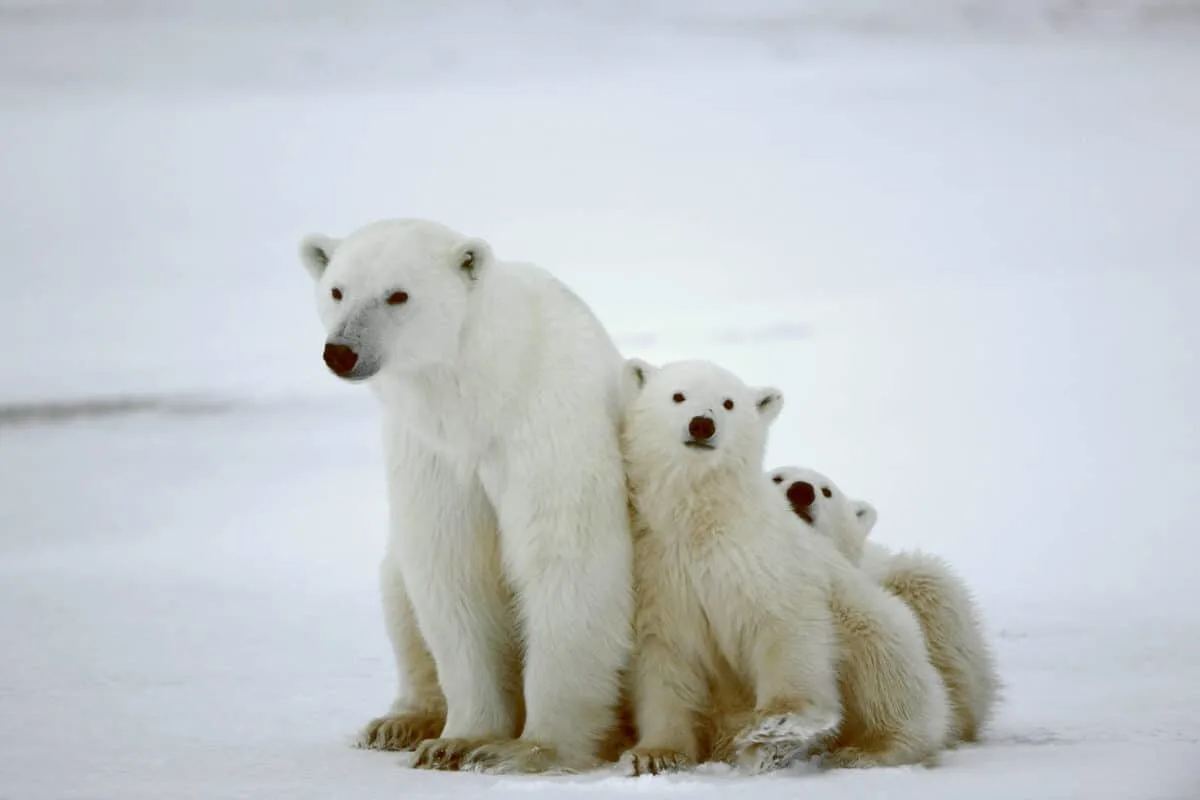Have you ever wanted a first-hand glimpse at the world’s largest land predator? Well, now is your chance! Polar bears possess a remarkable elegance and captivating allure, characterized by their dense white fur and mesmerizing blue gaze.
Polar Bear

The majestic beings serve as a profound representation of the breathtaking splendor present in our natural environment. These incredible animals may grow up to be almost three meters long, making them one of nature’s greatest predators- capable of taking down animals four times their size.
Whether they are out on sea ice hunting for breakfast or playing with their cubs in a snowy den, there is always something new to learn about these chilly Arctic dwellers. From how they hunt and eat to fascinating facts about why global warming affects them so drastically, come along as we explore more about this beautiful northern species: The Polar Bear!
Skip ahead to any section below!
Polar Bear The World’s Largest Land Predator
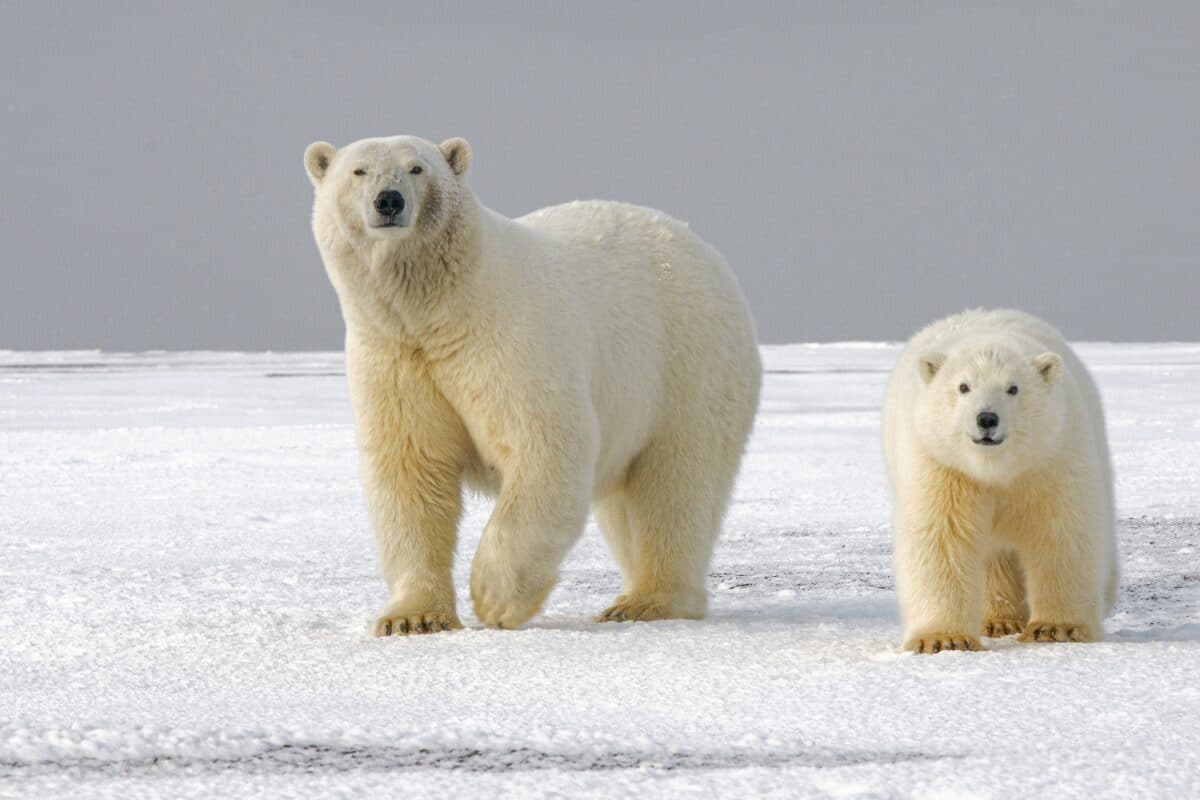
The polar bear, scientifically called Ursus maritimus, is the largest terrestrial predator worldwide and a prominent symbol of the Arctic realm. These impressive beings can reach lengths of up to 10 feet and weigh over 1,000 pounds, establishing them as the most sizable carnivorous land animal on the planet.
Polar bears are a sight to behold with their thick white fur, incredible swimming ability, and powerful jaws. The polar bear is one of the most awe-inspiring animals on the planet. Their awe-inspiring existence remarkable might stand as a tribute to the immense force exhibited by the natural world. If you ever have the opportunity to witness a polar bear in its natural habitat, it is an experience you will never forget.
Check out: Great White Shark Vs. Bull Shark.
Physical Characteristics Of Polar Bears
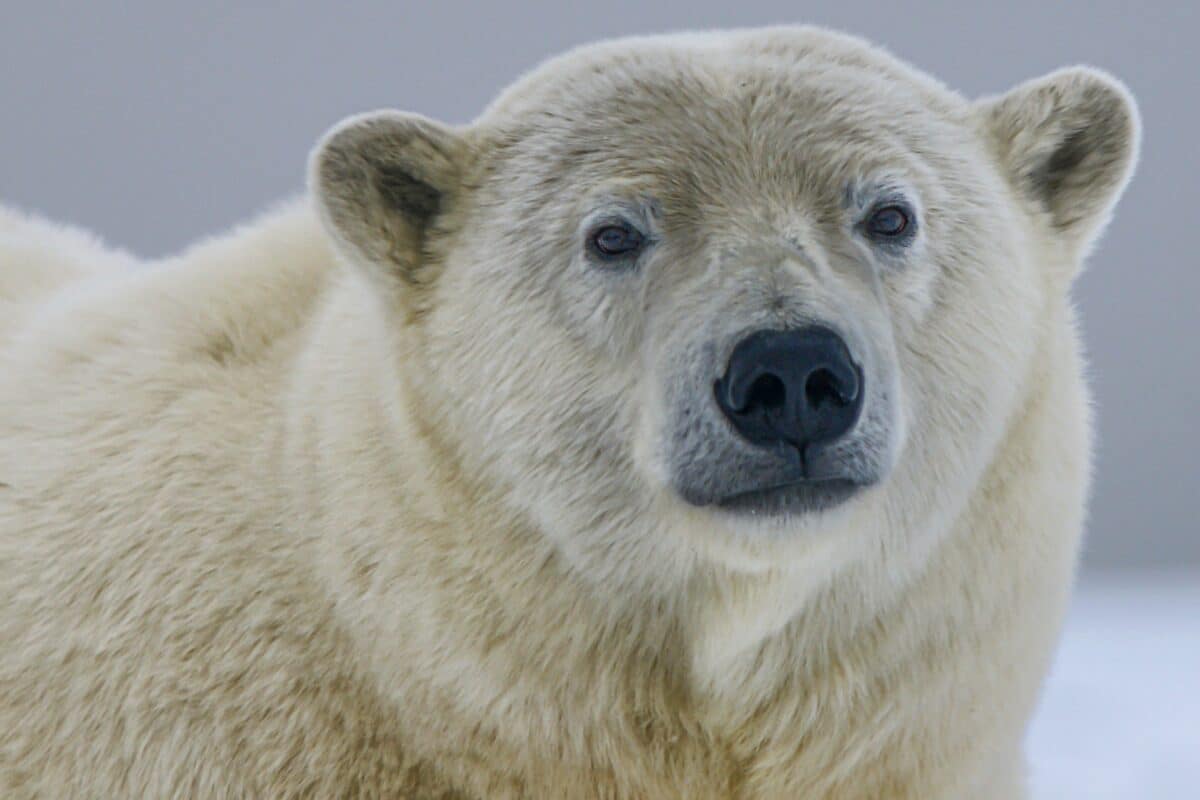
Polar bears, or Ursus maritimus, are the largest land carnivores on earth and excellent swimmers. These magnificent creatures are well adapted to extremely cold environments and have a range of physical features and characteristics that make them perfectly suited to their arctic habitat. Below are some fascinating facts about the physical characteristics of polar bears.
Size And Weight
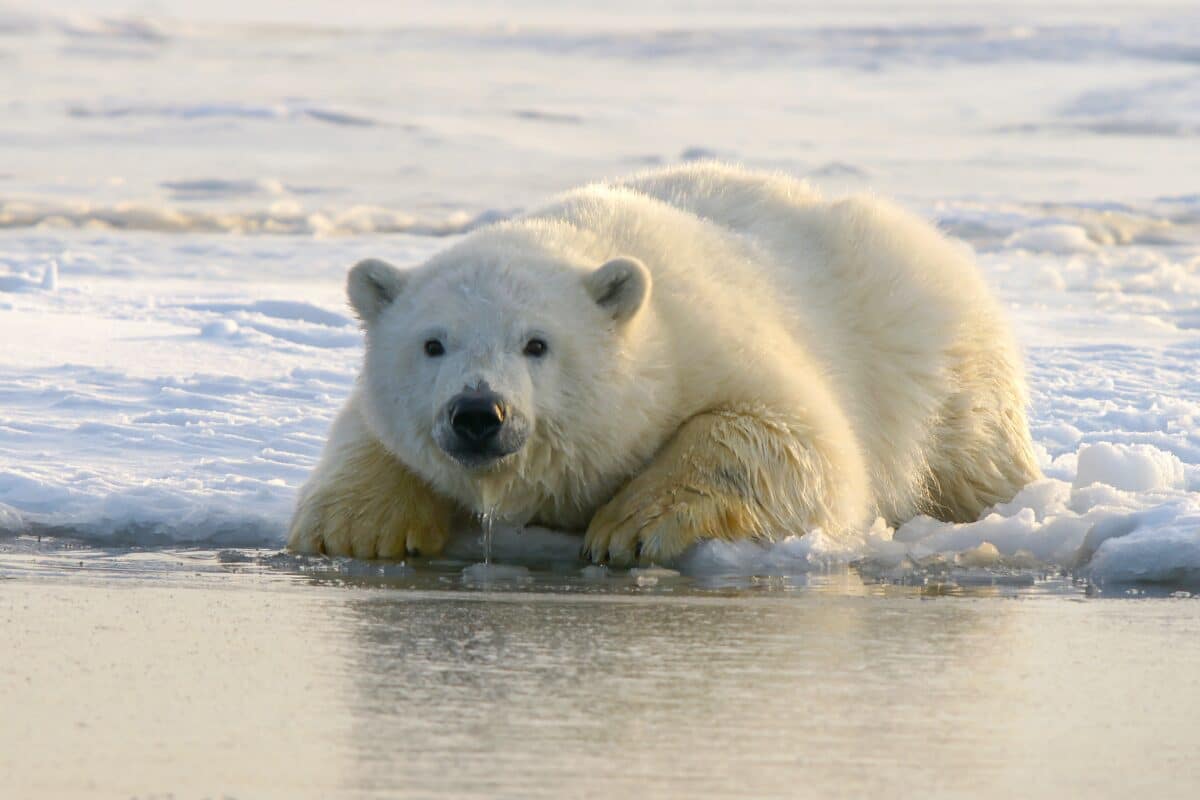
Adult male polar bears can weigh 350-700 kg and grow up to 3 meters long. Females are smaller and typically weigh between 150-250 kg. Newborn cubs are 30-35 cm long and weigh around 600-700 grams.
Thick White Fur
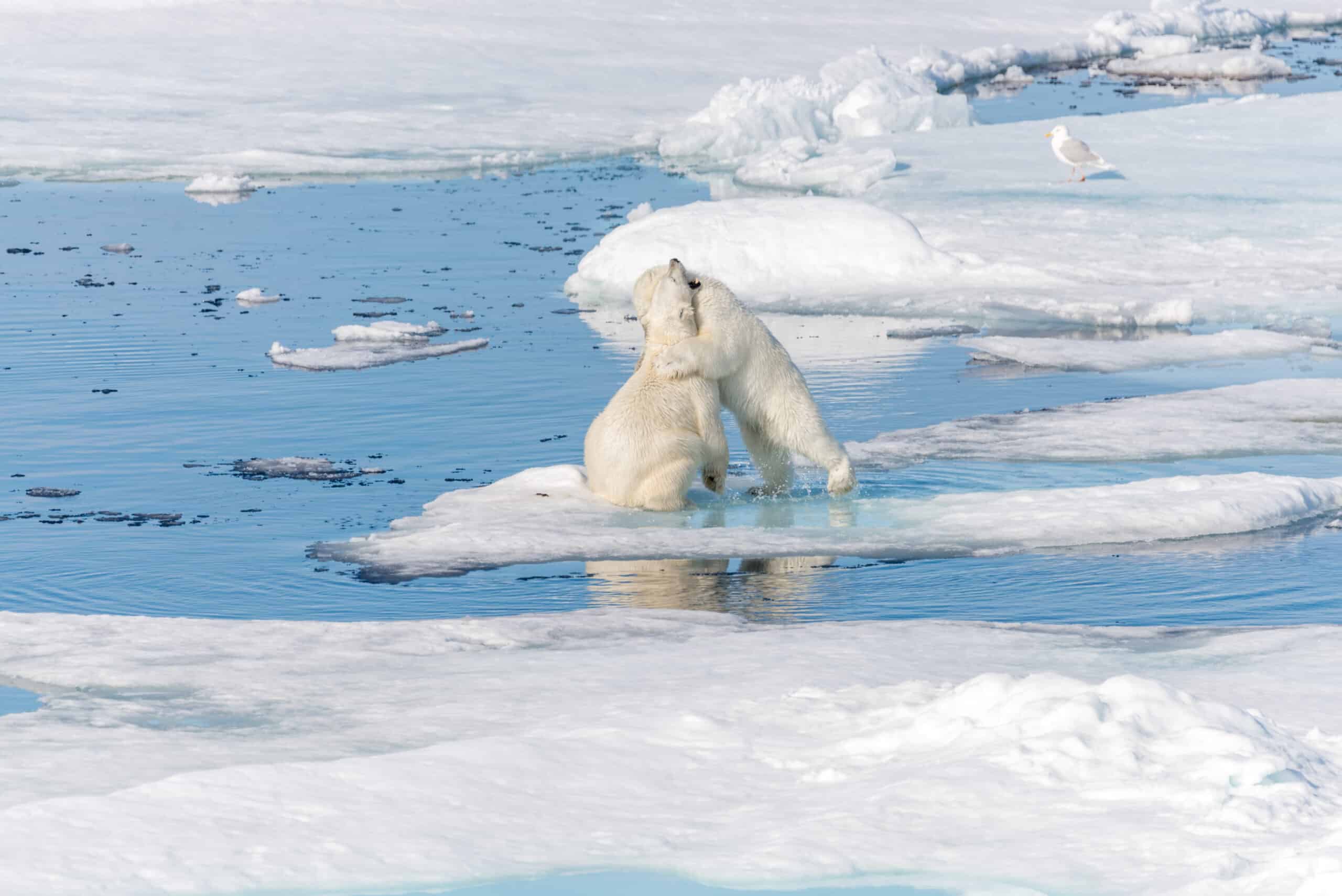
Polar bears are famous for their dense fur, which provides excellent insulation against the harsh Arctic climate. Comprising two distinct layers, their fur serves a protective purpose. The outer layer consists of guard hairs, transparent and hollow, that shield the underlying soft and insulating fur layer. These guard hairs capture and retain the sun’s rays, contributing to the bear’s warmth and thermal regulation.
- Adapted Paws
Polar bears have large, powerful paws perfectly adapted to their arctic environment. They are covered in small, soft bumps called papillae, which provide extra grip and traction on ice. In addition to their excellent hunting and climbing abilities, they possess elongated claws that serve multiple purposes. When swimming, polar bears use their large paws as paddles, helping them to move quickly through the water.
Curved Teeth

Polar bears are carnivorous, and their teeth are perfectly adapted for hunting. They have long, curved canine teeth that help them to catch prey and tear flesh. They also have sharp, jagged molars that help them to crush bones and eat meat.
Learn Are Polar Bears Omnivore or Carnivore? What Do They Eat?
- Hollow Bones
Another fascinating physical feature of polar bears is their hollow bones. This unique adaptation helps to reduce the bear’s overall weight, making them more buoyant in water. It is particularly important when they are swimming long distances in search of food or looking for a suitable place to rest.
Habitat And Adaptations
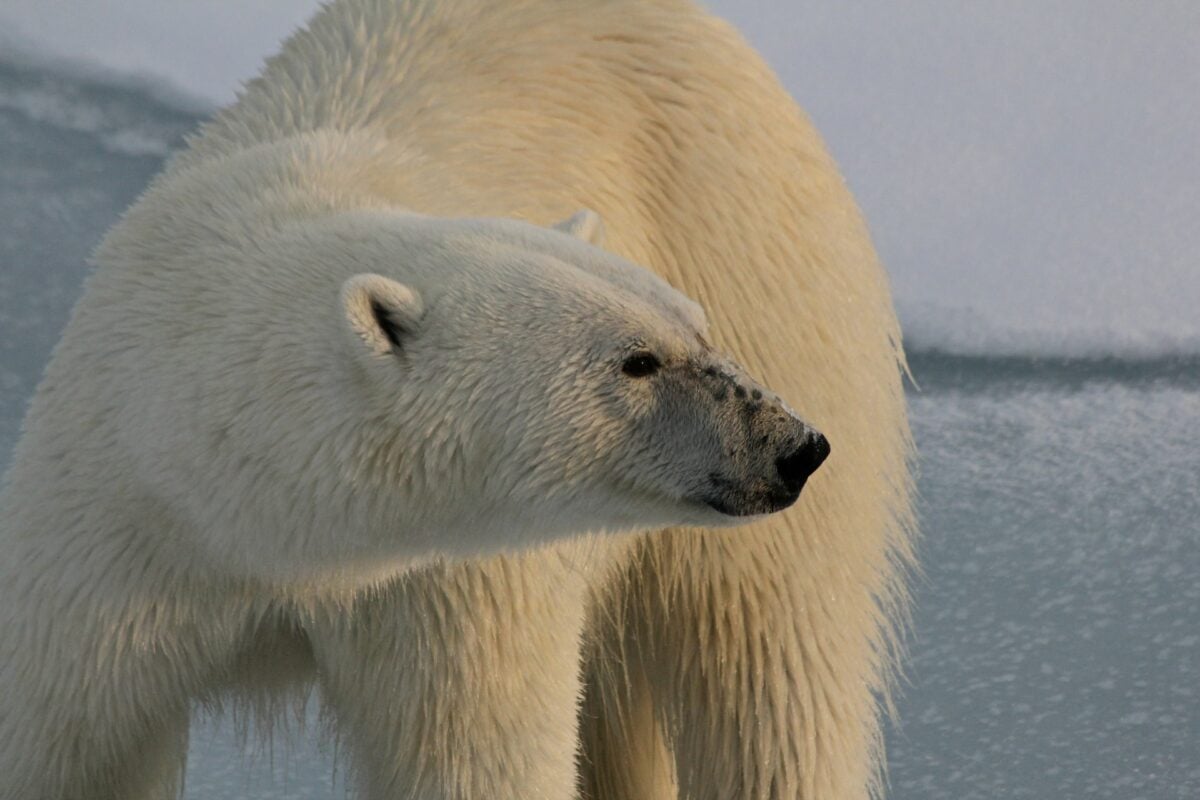
Polar bears are well adapted to life in one of the harshest environments on the planet. Their thick fur provides insulation against the cold, and their broad paws are perfect for gripping the slippery ice that covers much of the Arctic region. In addition, polar bears are excellent swimmers, capable of covering great distances in search of food or suitable habitat.
Despite their incredible adaptations, however, polar bears face significant challenges due to climate change. As the Arctic sea ice melts, polar bears are losing critical hunting and breeding grounds, and experts predict that without intervention, their populations could decline dramatically in the coming years.
Check out: Great White Shark vs. Nile Crocodile.
Hunting And Diet Of Polar Bears
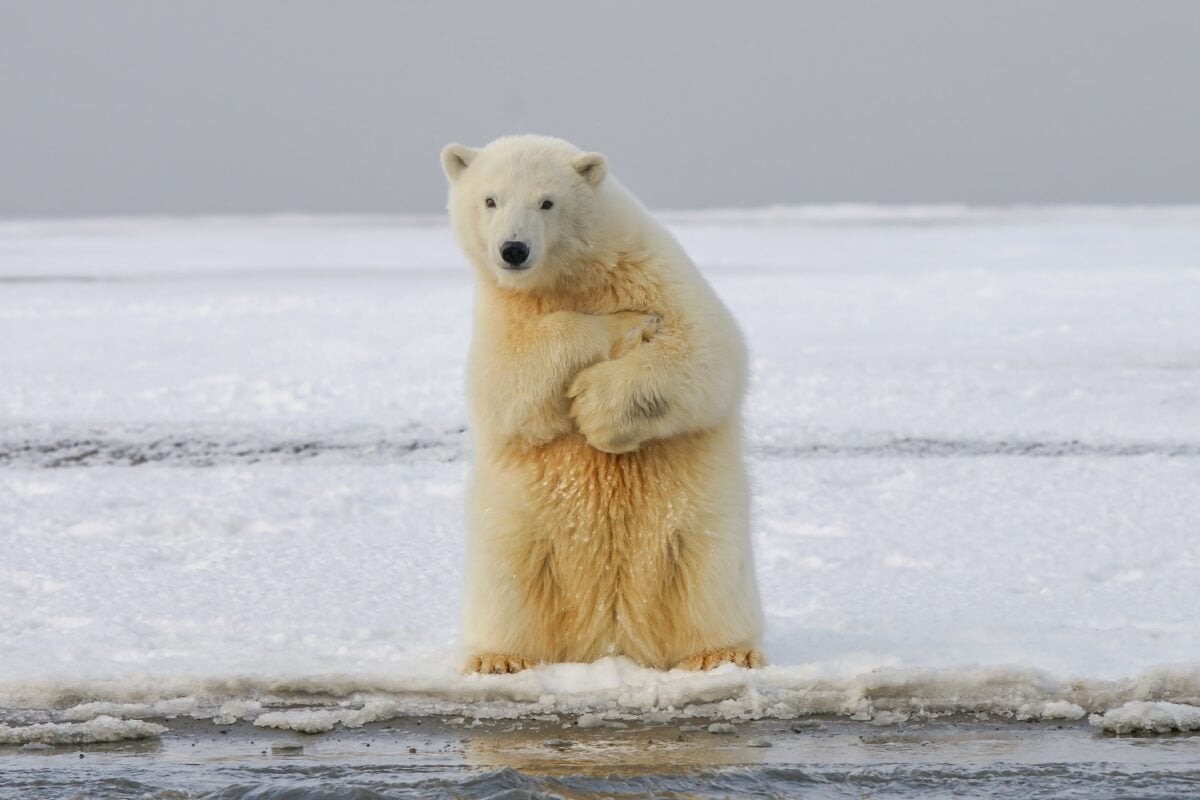
Polar bears are apex predators and have evolved to have a special diet that consists mainly of the seals that populate the Arctic region. Their hunting skills and methods are perfectly adapted to catch these marine mammals, which often account for more than 90% of their diet. Here are some interesting facts about the hunting and diet habits of polar bears
- Seal Hunting
Polar bears hunt seals by waiting near breathing holes in the ice, waiting for them to come up for air, or searching for the seals’ dens. Their excellent smell detects signs of seal’s breath, even from 1 km away and under the thick layer of ice. Once they locate their prey, they use their powerful jaws to break through the ice to grab the seal when it surfaces for air.
- Broad Diet
They consume ringed, bearded, and harp seals, all indigenous to the Arctic region. Interestingly, they also occasionally feed on other animals, such as fish, birds, and carrion.
- Feeding Habits
Polar bears are also known to cache their food. When food is abundant, they will store it to eat at a later time. They often bury their food in the snow or ice to protect it from other predators.
- Global Warming’s Impact
Polar bears’ hunting and feeding behaviors are at risk due to the adverse impacts of global warming and the consequent melting of sea ice. As more and more ice melts, polar bears must swim longer distances to find suitable hunting grounds, and the quality of food available to them is decreasing. Consequently, polar bears are experiencing reduced body conditions, birth rates, and overall population.
Threatened Species
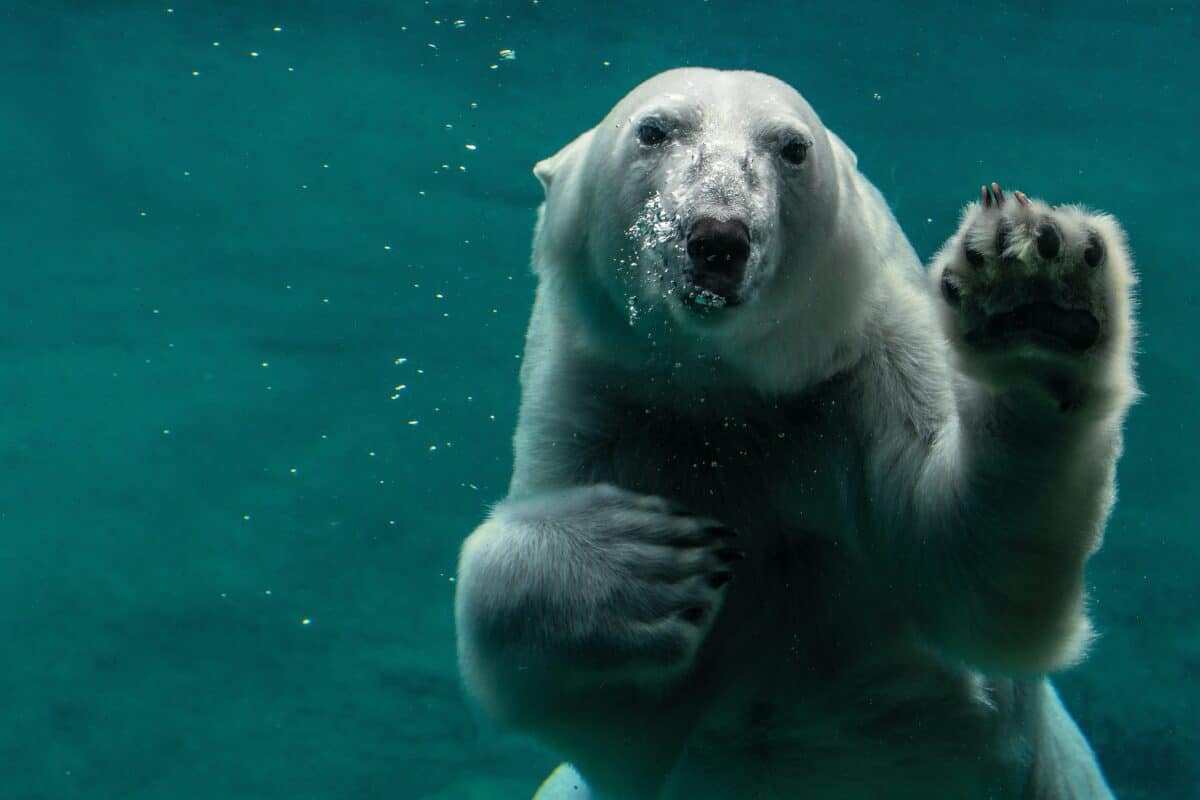
The Polar Bear, an icon of the Arctic region, is facing a stark reality – with their habitat rapidly changing due to global warming, they are at risk of extinction. As the Arctic ice melts, the bears face increasing difficulty hunting for their main food source: seals. It is a significant concern, as polar bears have evolved to rely on the Arctic sea ice to hunt and raise their young. Without it, they are facing a daunting future.
As scientists delve deeper into exploring these captivating creatures, our understanding of their behavior and requirements steadily expands.
Check out: The Biggest Arctic Wolf Ever Recorded.
Conservation Efforts
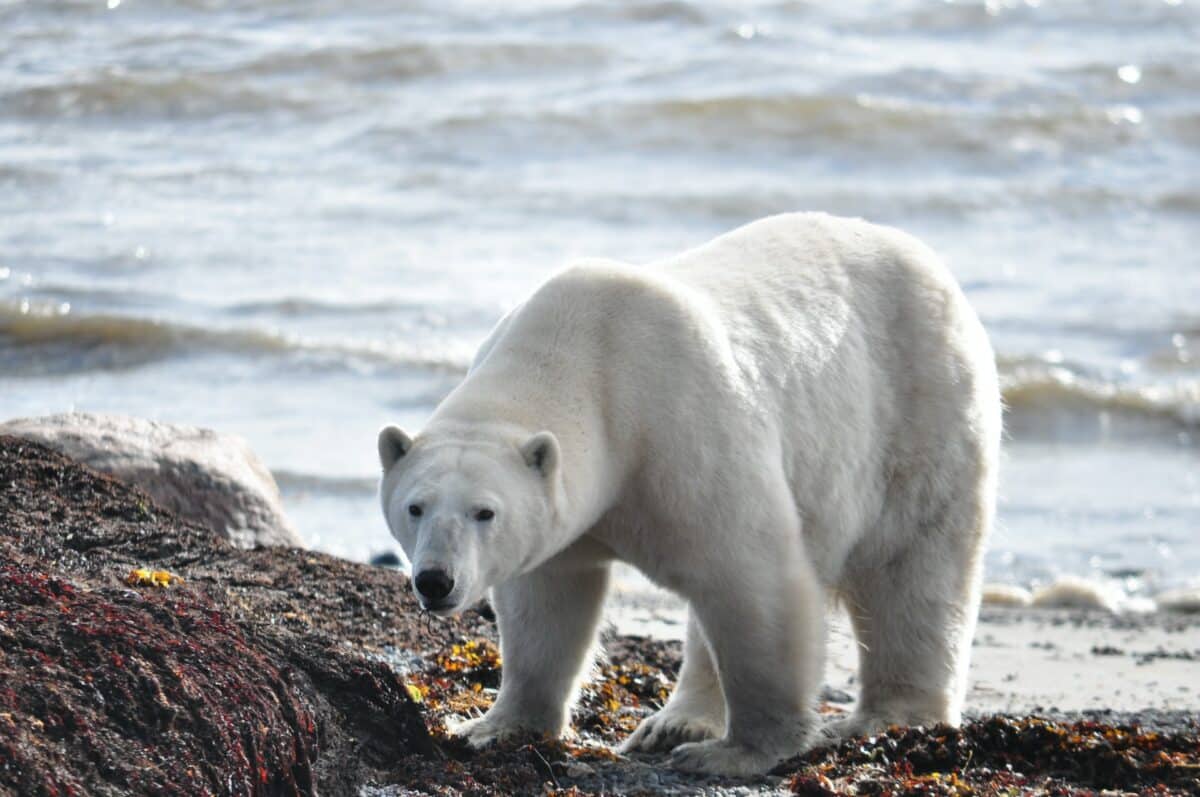
Like many other animals, polar bears are highly impacted by climate change. The melting Arctic ice leaves them with less and less area for hunting. Polar bears need a proper food supply to survive.
Fortunately, many initiatives are underway to aid these awe-inspiring apex predators. Countries around the Arctic have worked to establish protected areas and conservation efforts to preserve the polar bear’s natural habitat. These protected areas work to ensure that the polar bear’s hunting grounds and nesting areas remain untouched.
Individuals can also make a difference. Many of us can help by conserving resources and reducing our carbon footprint. By taking small, everyday steps like turning off lights when leaving a room, walking or biking rather than driving, and recycling our waste, we can help to reduce greenhouse gas emissions and slow the pace of climate change.
F.A.Qs
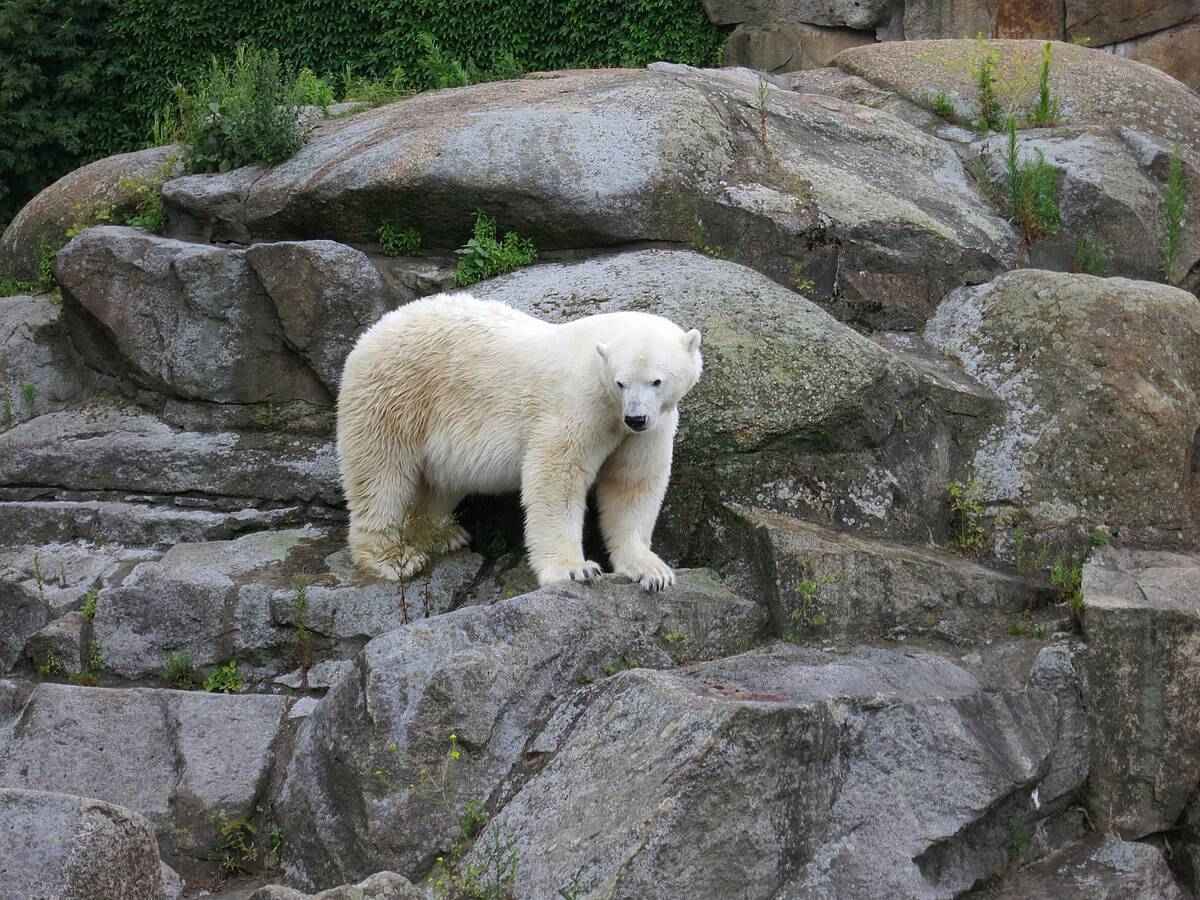
Polar bears have a thick layer of fat, insulating fur, and large paws that help them swim, hunt, and navigate the frozen Arctic environment.
Yes, polar bears are considered vulnerable due to the sea ice loss caused by climate change, which threatens their hunting and breeding patterns.
Polar bears are natural swimmers with streamlined bodies, partially webbed paws, and high buoyancy from their dense fur, allowing them to cover long distances in search of food.
Key Points

| Discover the majestic polar bear, the largest land predator known for its beauty and strength. |
| Learn fascinating facts about their size, weight, fur, paws, teeth, and hollow bones that help them thrive in their Arctic habitat. |
| Understand how polar bears adapt to survive in the harsh Arctic environment while facing threats due to climate change and melting sea ice. |
| Explore their hunting techniques and the primary diet of seals, showcasing their remarkable skills as apex predators, though endangered by global warming. |
| Recognize the importance of protecting polar bears and their habitats through conservation initiatives, while individuals can contribute by reducing their carbon footprint. |
Check out: Unearth the Reality of San Francisco’s Venomous Spiders.
Bottom Line

Polar Bear is a fascinating and magnificent creature that commands attention and respect. Their ability to survive in one of the harshest environments on the planet is a testament to their remarkable adaptability. However, the threat of climate change and the loss of sea ice poses a significant danger to their long-term survival. It is our responsibility to act and make a positive impact on the planet. We can help ensure the survival of the Polar Bear for generations to come.
By understanding more about these Arctic predators, we become better equipped to appreciate their role in the ecosystem. Better yet, the importance of their conservation. With their piercing blue eyes and thick fur, Polar Bears are sure to capture the hearts of people worldwide.
Thank you for reading

Thanks for reading long, for more, check out the article links below!
Next up: The Most Venomous Marine Animal: The Deadly Stonefish, Explore Washington’s Cougar Population, Explore Illinois’s Black Bear Population, Discover Washington’s Most Dangerous Animals, and Exploring The Enchanting World Of Baleen Whales.
Join our Forum for free today!

- Huge Pet Bison Breaks Into House - July 22, 2024
- Giant Black Bear Surprises Beachgoers by Emerging from the Ocean in Florida - July 22, 2024
- Brave Man Plays Instrument While Huge Bear Caresses His Shoulder - July 22, 2024

